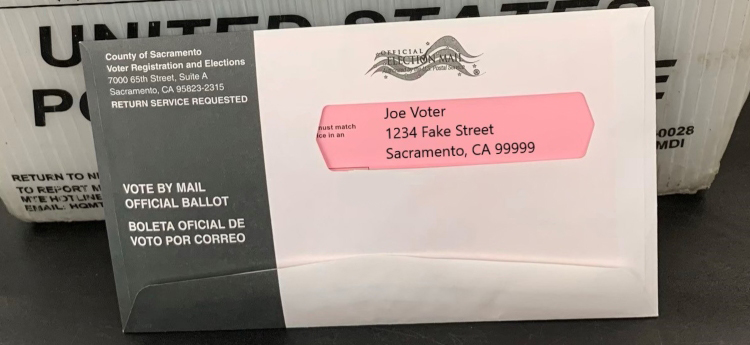
Sacramento County Vote by Mail Official Ballot. (Photo: Saccounty.net)
SCA 1 – ‘Yes’ means Yes, ‘No’ means No on Referenda
Will ensure the Attorney General prepares a title and summary of the measure as provided by law
By Chris Micheli, December 8, 2020 3:07 pm
On December 7, the first day of the California Legislature’s 2021-22 Session, Senator Bob Hertzberg (D-Van Nuys), introduced Senate Constitutional Amendment 1, which would place this measure before the statewide voters in June 2022 to make changes to Article II dealing with referenda.
Article II of the California Constitution deals with voting and the three forms of direct democracy in this state. One of those three forms is the referendum, which is intended to allow the state’s voters to overturn a statute that was enacted by the Legislature and Governor. SCA 1, if adopted by a two-thirds vote of both houses of the Legislature (no gubernatorial action is required, as opposed to bills).
Under the current constitution (Article II, Section 9), a majority vote by the state’s electors voting “yes” approves the statute that was adopted during the legislative process. SCA 1 proposes to require the ballot for a referendum to specify that a “Yes” vote means the elector is voting in favor of the referendum, thereby rejecting the statute, and a “No” vote means the elector is voting against the referendum, thereby approving the statute. As a result, a majority vote in favor of the referendum would have the effect of rejecting the statute that is the subject of the referendum.
The first part of SCA1 would amend Article II, Section 9 by amending subdivision (c) in the following manner:
(c) The Secretary of State shall then submit the measure at the next general election held at least 31 days after it qualifies or at a special statewide election held prior to that general election. The ballot shall provide that a “Yes” vote is in favor of the referendum and rejects the statute or part of the statute subject to the referendum, and a “No” vote is against the referendum and approves the statute or part of the statute subject to the referendum. The Governor may call a special statewide election for the measure.
The second part of SCA1 would amend Article II, Section 10 by amending subdivisions (a), (c) and (d) in the following manner:
(a) An initiative statute or referendum approved by a majority of votes cast thereon takes effect on the fifth day after the Secretary of State files the statement of the vote for the election at which the measure is voted on, but the measure may provide that it becomes operative after its effective date. If a referendum measure fails by not receiving a majority of votes cast, the statute or part of a statute that was the subject of the referendum takes effect on the fifth day after the Secretary of State files the statement of the vote for the election at which the measure is voted on. If a referendum petition is filed against a part of a statute, the remainder of the statute shall not be delayed from going into effect.
(c) The Legislature may amend or repeal a referendum statute. statute or part of a statute that is the subject of a referendum. The Legislature may amend or repeal an initiative statute by another statute that becomes effective only when approved by the electors unless the initiative statute permits amendment or repeal without the electors’ approval.
(d) Before circulation of an initiative or referendum petition for signatures, a copy shall be submitted to the Attorney General who shall prepare a title and summary of the measure as provided by law. The petition shall provide that a “Yes” vote is in favor of the referendum and rejects the statute or part of the statute subject to the referendum, and a “No” vote is against the referendum and approves the statute or part of the statute subject to the referendum.
SCA 1 will likely be heard in the Senate policy committee in March, although SCAs are not subject to many of the normal deadlines of the legislative process, and the measure could be voted upon as late as the early summer of 2022 in order to be placed on the November 2022 statewide ballot.
- Frequently Asked Questions about Privileges of Voters in California - April 23, 2024
- Does a Bill Need Statutory Construction Guidance? - April 22, 2024
- Frequently Asked Questions about Lobbying Support Services - April 22, 2024



